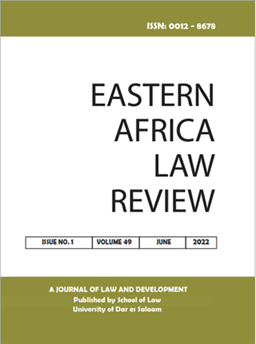The Basic Structure Doctrine and Constitutional Restraint in Uganda: The "Age Limit" Case
Abstract
This Article discusses the scope and application of
the Basic Structure Doctrine, against the
background of the judgment of the Constitutional
Court and Supreme Court of Uganda in the case of
Male Mabirizi Kiwanuka and Others v. Attorney
General, wherein the two courts found that an
amendment to the Constitution of Uganda removing
the "age-limit" qualification to stand for president
did not violate the Doctrine and was valid. It is
argued that given Uganda ' s political history the
clause, which was designed to prevent the sitting
president from taking advantage of his incumbency
to perpetuate himself in power, was part of the
basic structure of the Constitution. As it was, the
impugned amendment removed the last measure
against a life presidency, and is a recipe for
instability. The court decisions were a missed opportunity to assert the power of the Judiciary as
the foremost defender of constitutionalism and the
rule of law.
Key words: Basic Structure, Constitution, Constitutionalism,
amendment, age-limit, life-presidency.



